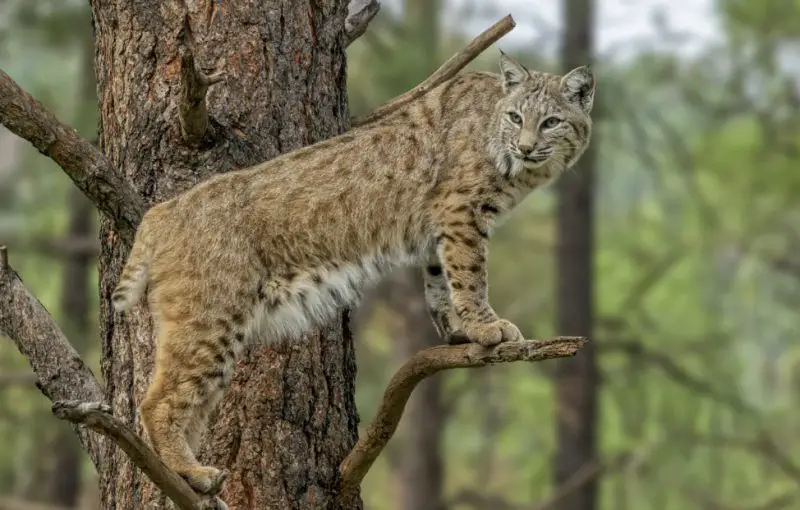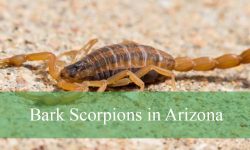Bobcats are among the most adaptable predators in North America, but nowhere do they display their resilience and intelligence more clearly than in the New Mexico canyons. These steep, rugged landscapes—shaped by erosion, shifting climates, and ancient geology—provide everything bobcats need: shelter, prey, cover, and isolation. Yet most people living near these canyons have never seen one. The bobcats in New Mexico thrive not by avoiding humans entirely, but by mastering the art of staying unseen. Their world is active, complex, and scientifically fascinating, with behaviors shaped directly by canyon terrain.
Understanding bobcats here means looking beyond the stereotype of a small, spotted wild cat. In New Mexico, they become canyon specialists. Their hunting, movement, reproduction, and ecological role shift with the rock structures around them. This article takes you inside that hidden world—revealing how these cats survive, what makes canyon ecosystems perfect for them, and why they remain some of the most important mid-sized predators in the Southwest.
Why New Mexico Canyons Create the Perfect Bobcat Habitat

The canyon systems in New Mexico—from the Rio Grande rift to the Guadalupe Mountains—offer a rare combination of vertical structure, prey density, temperature stability, and cover. Bobcats thrive in landscapes where terrain offers natural concealment, and canyons supply this in layers.
Loose soils in canyon bottoms attract rodents and rabbits. Rocky ledges give bobcats instant elevation advantages. Shrub pockets along slopes provide stalking routes. And shaded alcoves create rest sites protected from extreme heat. In winter, rock faces absorb sunlight and radiate warmth, giving bobcats thermally stable resting points.
Bobcats also take advantage of canyon acoustics. Sounds bounce unpredictably, allowing them to hear prey more clearly while remaining undetected themselves. The twisting canyon corridors create natural funnels where prey concentrate, which bobcats learn over time. This terrain-driven behavior is rarely discussed, yet it is one reason bobcats remain so efficient in these landscapes.
Behavior Shaped by Canyon Geography
Bobcats everywhere are solitary and territorial, but canyon-dwelling bobcats have distinct behavioral patterns. They move along predictable geological features—bench shelves, narrow ledges, drainage channels—rather than open routes. These natural lines help them conserve energy and avoid predators such as coyotes or large raptors.
Their territories often follow the length of canyon systems, stretching from upper ridges to lower washes. This vertical range allows them to exploit multiple microhabitats within one home area. A single bobcat may rest on an elevated platform during the day but hunt in the cooler canyon floor at dusk.
Bobcats in New Mexico also show heightened awareness of human movement. Trail cameras often capture bobcats traveling just minutes after hikers leave an area. This timing indicates advanced spatial memory and an ability to monitor subtle environmental cues.
The Canyon Bobcat’s Diet: A Flexible Strategy
The bobcats in New Mexico canyons rely heavily on rabbits—especially cottontails and jackrabbits. This is expected, but their diet is more flexible than many people realize. These predators eat according to terrain and season. In rocky canyons with limited vegetation, bobcats may rely more on rock squirrels or packrats. In wetter canyon bottoms, they may take quail or other ground birds. During droughts, they shift toward lizards and small snakes.
This adaptability is a major survival advantage. Because canyon climates fluctuate sharply between seasons—and sometimes even daily—bobcats cannot afford narrow dietary habits. Their digestive systems, teeth structure, and hunting methods all reflect this flexibility.
Interestingly, bobcats in canyon ecosystems often cache kills under small rock piles or brush clusters, returning later when conditions are safer. This caching behavior reduces risk and helps sustain energy during lean periods.
How Bobcats Move Through Canyons Without Being Seen
Canyon bobcats rarely travel in straight lines. Instead, they follow well-practiced routes shaped by terrain: between boulders, along faint animal trails, under juniper branches, and across narrow outcrops. These routes are not random. They are the result of long-term learning.
Bobcats learn which paths are least visible from above, which slopes provide stable footing, and which drainage channels offer the fastest escape routes. Their gait—light, deliberate, and low-impact—helps minimize noise and prevents small rocks from clattering down slopes.
People often underestimate how skilled bobcats are at visually blending into canyon environments. Even standing in full daylight, a bobcat can disappear into background textures simply by holding still. Researchers studying bobcats in the Guadalupe and Gila canyon systems frequently report losing sight of animals just seconds after spotting them.
A Predator Built for Canyon Terrain
Bobcats have several anatomical advantages that make them ideal canyon predators. Their long back legs and flexible spine allow them to leap vertically onto rock surfaces. Their compact build helps them maneuver between tight crevices without losing balance. They can also descend steep slopes better than many carnivores of similar size.
Their senses are even more specialized. Bobcats have exceptional night vision, allowing them to navigate canyons with minimal moonlight. Their ears filter directionally amplified sounds, helping them detect prey beneath chamisa bushes or inside rocky cavities. Their whiskers help gauge narrow spaces—important when climbing around ledges.
But one of the least-known adaptations is their ability to control breathing rhythm during a stalk. This makes their movement nearly silent, even across dry gravel. Sound discipline is an underestimated part of bobcat success.
How Bobcats Hunt in New Mexico Canyons
Canyon terrain changes the way bobcats hunt. Instead of long pursuits, they rely on short-range ambush techniques. Elevated positions offer them vantage points for spotting prey, but they must descend quietly and close the distance with patience.
A typical canyon hunt involves:
-
Watching prey from a shaded lookout
-
Using brush pockets or slope shadows to approach
-
Freezing when prey lifts its head
-
Striking within a few meters using a lightning-fast pounce
Unlike coyotes, bobcats rarely chase prey long distances. They rely on energy efficiency. This is especially important in canyons where temperatures swing dramatically and hydration is limited.
The cats also adjust their hunting times based on weather. During hot periods, they prefer dusk and dawn. During colder seasons, they may hunt more in daylight to conserve warmth.
Reproduction and Family Behavior Hidden From View
Bobcats in canyon habitats often choose dens in rock alcoves, beneath ledges, or inside erosion-created pockets. These spaces stay cooler in summer and warmer in winter, providing ideal nursery conditions.
Kittens are born in late spring after a gestation of about two months. For the first few weeks, they remain in the primary den while the mother alternates between hunting and guarding. As they grow, she leads them on short training walks—teaching movement, prey recognition, and safe paths.
The learning process is long. Young bobcats stay with their mother for nearly a year. Canyon environments require careful navigation, and kittens must master route memory to avoid falls, predators, or human areas.
In late winter, the young disperse, often following canyon corridors until they locate unclaimed territories.
The Ecological Role of Bobcats in Canyon Systems
Bobcats are mesopredators—mid-sized carnivores that regulate prey populations but do not dominate ecosystems the way top predators do. In New Mexico, their influence is substantial.
By regulating rabbit and rodent populations, bobcats help maintain vegetation balance. Rabbits, especially jackrabbits, have enormous grazing impact. Without predators like bobcats, many desert plants would experience higher browsing pressure. Rodents also affect seed banks and soil conditions. Bobcats directly help control rodent booms, reducing the risk of crop impacts or disease cycles.
Bobcats also indirectly help other species. When bobcats reduce rodent numbers, snakes may shift toward different prey types. Quail benefit from reduced nest predation when bobcats keep rodent competition in check. The cascading effects reach deeper than most people expect.
Predators that prey on bobcats—such as mountain lions or large raptors—also rely on their presence. This creates a multi-level food web where bobcats occupy a crucial middle position.
Bobcats and Human Communities Near Canyons
Human expanding neighborhoods often interface with canyon ecosystems. Yet bobcats in New Mexico canyons rarely encounter people directly. They adjust their activity patterns around human schedules, moving primarily during the quietest hours of night.
In suburban canyon-edge communities—such as those around Albuquerque’s foothills or Santa Fe’s arroyos—security cameras regularly record bobcats passing through yards at dawn. But these visits are usually harmless. Bobcats are not interested in humans and rarely pose threats unless small, unsecured pets are outdoors.
Their presence often indicates a healthy ecosystem. When bobcats disappear, prey species typically surge, causing vegetation stress and higher rodent-related issues.
Some homeowners worry about livestock, but bobcats generally prefer natural prey. Poultry losses occur mostly with unsecured coops. Reinforced structures usually eliminate conflicts.
Why Bobcats Are Harder to Study in New Mexico
Canyon systems are difficult research environments. Deep crevices, steep drop-offs, and unpredictable access points limit tracking methods. Radio-collaring bobcats in these areas is challenging. GPS signals often fail in narrow canyon slots. Many bobcats avoid bait sites entirely, making captures infrequent.
Because of these challenges, much remains unknown. Researchers believe there may be behavioral differences between canyon bobcats and those in open desert or forest regions, but data collection is ongoing.
Some preliminary findings include:
-
Canyon bobcats may use smaller territories than previously estimated
-
They may show more flexible hunting schedules
-
Their den sites may be more stable across seasons
-
Human avoidance behavior appears more pronounced
This underscores how specialized and adaptive canyon bobcats truly are.
Threats Bobcats Face in New Mexico
While bobcats are resilient, they are not immune to threats. Habitat fragmentation from development pushes them into smaller canyon segments. Road networks near canyon systems increase mortality rates. Drought reduces prey availability, forcing bobcats to expand their range and risk conflict.
Poison used for rodent control also impacts bobcats indirectly through secondary poisoning. Conservationists in New Mexico emphasize that keeping ecosystems healthy—rather than targeting predators—is the best long-term solution.
How to Coexist With Bobcats Near Canyon Regions
Coexistence is straightforward:
-
Secure small pets at night
-
Reinforce poultry enclosures
-
Remove outdoor food sources
-
Keep yards clear of attractants like open compost
-
Avoid approaching bobcats if sighted
Bobcats typically pass through quickly. Understanding their patterns reduces fear and encourages informed coexistence.
Most importantly, bobcats are not aggressive toward people. Their instinct is always to avoid interaction.
FAQs About Bobcats in New Mexico Canyons
Are bobcats dangerous to humans?
No. Bobcats avoid people and rarely approach unless cornered. They prefer natural prey and maintain distance.
What do bobcats eat in canyon habitats?
Mostly rabbits, rodents, quail, lizards, and occasionally carrion. Their diet shifts with canyon terrain and season.
Do bobcats live close to neighborhoods?
Yes. Canyon-edge communities often host bobcats, but sightings are rare because they move at night.
How large is a bobcat’s territory?
Male territories can reach 10–40 square miles depending on prey. Canyon habitats may create smaller but more complex territorial shapes.
Can bobcats climb canyon walls?
Yes. Their strong hind legs and balance make them excellent climbers suited to rocky terrain.
Are bobcats active year-round?
Yes. They do not hibernate. Activity shifts with temperature—more nocturnal in summer, more diurnal in winter.
How do bobcats affect ecosystems?
They regulate prey populations, especially rabbits and rodents, stabilizing vegetation and ecosystem processes.
What should I do if a bobcat walks through my yard?
Give it space. It will leave quickly. Securing pets and food sources prevents future visits.
Final Thoughts
The hidden world of bobcats in New Mexico canyons is rich, complex, and essential to understanding desert ecosystems. These predators are not only skilled hunters but also key ecological stabilizers. Their behaviors—shaped by canyon geography—form a delicate balance between predator, prey, and environment.
Though sightings remain rare, the presence of bobcats means the canyon ecosystem is functioning as it should. Their intelligence, adaptability, and keen awareness make them quiet guardians of New Mexico’s wild spaces. Learning about them is not just an exploration of a single species—it’s a window into how life persists in some of the most challenging and beautiful landscapes of the Southwest.






